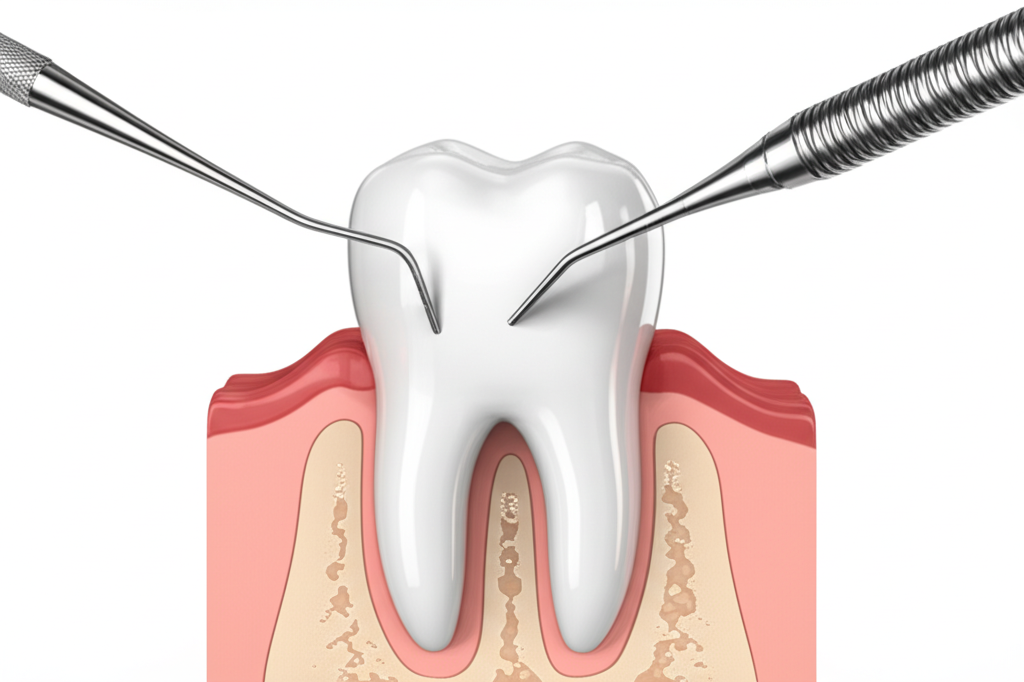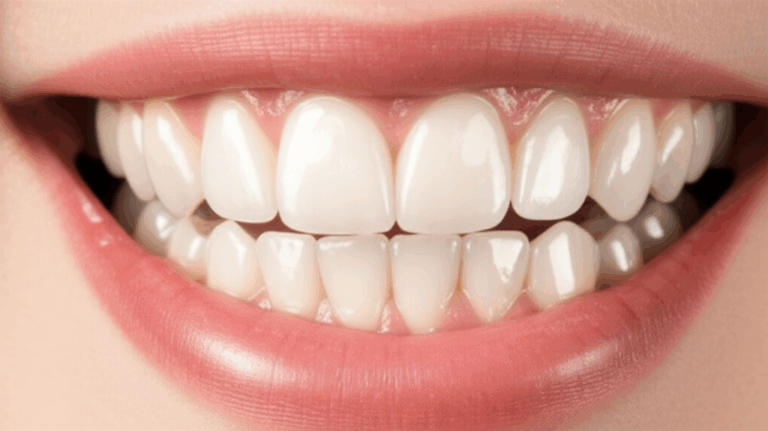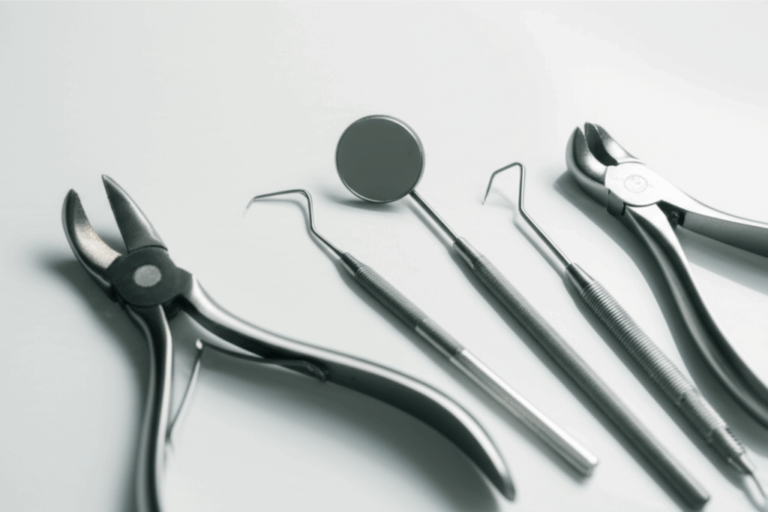
How Your Dentist Fixes Cavities: A Step-by-Step Guide to Treatment & Recovery
Dental cavities are one of the most common problems people of all ages face. But have you ever wondered exactly how a dentist fixes a cavity? In this article, I’ll walk you through the process in plain language. You’ll learn what a cavity is, what happens during a dentist appointment, the options for treatment, and how you can keep your teeth healthy after your filling. By the end, you’ll realize that getting a cavity fixed can be simple and even comfortable—and you’ll know just what to expect the next time you hop in the dental chair.
Table of Contents
1. Introduction: What Are Cavities and Why Should You Care?
Have you noticed a sharp pain when you bite ice cream or candy? Maybe you’ve seen a dark spot on your tooth or felt food getting stuck in the same place? Chances are, you’ve got a cavity.
A cavity is a tiny hole or bad spot in your tooth. Cavities happen when germs in your mouth eat sugar and make acid. This acid eats away at your tooth’s hard outer part—called the enamel—then moves deeper inside if you don’t stop it.
Why is treating cavities so important?
If you ignore a cavity, it gets bigger. That means pain, infection, and sometimes even losing a tooth. Some people think they can just leave it alone, but trust me—as someone who’s helped lots of worried patients—you’ll want to take care of cavities early.
2. How Does a Dentist Find a Cavity?
You might wonder how your dentist knows you have a cavity, even if you can’t see or feel it yet.
Visual Exam:
First, every visit usually starts with your dentist looking closely at your teeth. They check for dark spots, small holes, or signs of tooth decay. They may use a bright light and a small mirror to see everywhere.
Dental X-rays:
Not all cavities are easy to spot. Some hide between teeth or under old fillings. That’s where dental X-rays help. An X-ray lets your dentist see under the surface. This helps find tooth problems early—before you even feel pain.
Dental Probes and Dyes:
If your dentist feels a soft spot with a tool (called a probe), it may mean the enamel is weak. Sometimes, they use a special dye to show where the cavity is.
Remember, finding it early is important. A small cavity is much easier—and cheaper—to fix than a big one.
3. What Happens During a Filling?
So, the dentist says you have a cavity. What next? Let me walk you through the actual steps.
Numbing the Area
First, your dentist will use local anesthesia to numb your gums and tooth. You’ll feel a tiny pinch from the needle, but after that, nothing hurts. Some dentists also offer something to help you relax if you’re scared.
Removing the Decay
Next, the real work starts. The dentist removes the bad part of your tooth using a dental drill. It might sound scary, but you won’t feel pain—just a bit of push and maybe the noise from the drill. Some dentists use laser tools or air to remove very small cavities.
Cleaning and Disinfecting
Once all the decay is gone, the hole (or “cavity”) in your tooth is cleaned well. This step makes sure there are no germs left.
Filling the Tooth
The dentist fills the cleaned space with the right material for your needs (we’ll talk about options in the next section). If you get a composite resin filling, they put on something sticky to help it hold. With amalgam or gold fillings, they shape and press in the material.
After the filling is in, a special curing light might be used to harden it, especially for tooth-colored types.
Shaping and Polishing
Finally, they make the filling smooth and check your bite to make sure it feels normal when you close your mouth. Sometimes you bite down on a blue paper to help them check.
And that’s it! The whole thing usually takes less than an hour.
4. What Types of Fillings Can You Get?
There’s no single answer when it comes to cavity fillings. Let’s break down your options, so you can talk to your dentist about what’s best for you.
Composite Resin (Tooth-Colored Fillings)
Composite resin is popular today. It matches your tooth color and blends in so no one knows you had a cavity. It needs a bonding agent to hold on. The dentist puts it in layer by layer, making each hard with a light.
Pros:
- Looks natural
- Great for front teeth
Cons:
- Can wear down faster than others, especially if you grind your teeth
- Usually costs more than silver fillings
Amalgam (Silver Fillings)
Silver (amalgam) fillings use a mix of silver, tin, and mercury. Dentists have used them for years because they’re strong, reliable, and cost less.
Pros:
- Very tough
- Good for back teeth where you chew most
Cons:
- Not hidden; people can see them
- Some worry about mercury, but dental studies show it’s safe
Gold Fillings
Gold fillings last a long time and almost never wear out.
Pros:
- Can last 20 years or more
- Very strong
Cons:
- Gold color stands out
- Most expensive
Porcelain/Ceramic Fillings (Inlays/Onlays)
These are made just for you in a lab and then glued to your tooth.
Pros:
- Looks like your real teeth
- Good for big cavities
Cons:
- Can break if you chew ice or hard foods
- Costs more and often takes two visits
Glass Ionomer Cement
Used mostly for kids’ teeth or as a quick fix for adults. It slowly lets out fluoride, which helps protect the tooth.
Talk with your dentist, and they’ll help you pick based on where the tooth is, your habits, and your wallet. For bigger repairs like crowns or bridges, you might need a crown and bridge lab.
| Filling Type | Color | Average Lifespan | Cost (USD) | Notes |
|---|---|---|---|---|
| Composite resin | Tooth | 5 – 7 years | $150 – $400 | Looks real |
| Amalgam (silver) | Metallic | 10 – 15 years | $100 – $300 | Strong and affordable |
| Gold | Gold | 15 – 20+ years | $500 – $1,500 | Very tough, pricey |
| Porcelain/Inlay/Onlay | Tooth | 10 – 15 years | $500 – $1,500 | Made in lab |
| Glass Ionomer Cement | Tooth | 3 – 5 years | $90 – $200 | Mostly for kids |
5. When Do You Need More Than a Filling?
Not every cavity can be fixed with a simple filling. Sometimes, decay goes too deep or your tooth is really cracked.
Dental Crown:
If your tooth is weak, your dentist may say you need a dental crown. This is a strong cap that covers your tooth, making it look and work like new. Sometimes your dentist will work with a dental ceramics lab to custom-make it, which gives you a better fit and look.
Root Canal:
If decay gets to the pulp (the soft center with nerves and blood supply), that means pain or maybe infection. Your dentist will do a root canal to remove the bad part and fill the space, usually covered by a crown.
Tooth Extraction:
Once in a while, the tooth is too far gone and can’t be saved. Then your dentist might need to pull it out and think about putting in an implant, bridge, or denture, usually made by a special lab.
6. Does Cavity Treatment Hurt?
Let’s be real: almost everyone worries about pain at the dentist. You’re not alone. Good news—today’s dental care is focused on comfort.
Numbing with Local Anesthesia:
Your dentist will always numb your tooth first. That means no pain, just a weird “fat lip” feeling for a bit.
Sedation and Anxiety Control:
Feeling nervous? Some dentists offer something to help you relax. Don’t be shy to ask—your comfort matters.
Post-Treatment Sensitivity:
It’s normal for your tooth or gums to be a little sore for a day or two after your filling, especially with new composite fillings. If it doesn’t feel better after a week or you feel worse, call your dentist.
I remember telling a patient named Emily: “Most people say getting a filling isn’t bad at all! The sound or pressure is the odd part, not the pain. You’ll be just fine.”
7. What Should You Expect After a Filling?
The dentist fixed your tooth—now what? Here’s what happens after you leave the office.
Numbness and Soreness
You’ll leave with your lip, tongue, and cheek still feeling numb. Don’t eat or drink hot stuff or chew until the numbness is gone. Otherwise, you might bite yourself without noticing.
Some soreness or a bit of swelling near your gum is also normal. This gets better in a day or two.
Sensitivity to Hot, Cold, or Sweets
Your tooth might feel touchy to cold, hot, or pressure for a few days—sometimes a couple weeks, especially with tooth-colored fillings. This is common. Just tell your dentist if it doesn’t get better.
Eating and Drinking
Once you can feel your mouth again, you can eat like usual. Be gentle on the filled tooth for a while and skip hard or sticky foods that first day.
Oral Hygiene
Brush and floss normally! Even better, brush twice a day with fluoride toothpaste and floss every day. Good dental care keeps your filling healthy and stops more cavities.
When to Call Your Dentist
Call your dentist if:
- You have pain that won’t quit
- Your filling feels too high or rough when you bite down
- The filling cracks, breaks, or falls out
These don’t happen much, but they’re easy to fix.
8. How Can You Avoid More Cavities?
Nobody wants another filling! Here’s how you can keep your smile safe.
- Brush twice a day with fluoride toothpaste.
- Floss daily to clean between teeth—where most cavities start.
- Cut back on sugary snacks and drinks. Germs love sugar.
- Drink plenty of water.
- See your dentist for regular check-ups and cleanings.
Your dentist might suggest dental sealants for your back teeth or fluoride treatments. For more tips, check out this dental practical guide.
9. Why Timely Dental Care Matters
Here’s the truth: leaving cavities untreated is never a good idea. Small problems turn into big (and expensive) ones if you wait. Untreated decay leads to pain, infection, and even bigger health problems. It’s just not worth it.
A fast, simple filling now means you can avoid a future root canal or missing tooth. And regular care means fewer cavities later.
10. FAQs About Getting Your Cavity Fixed
Q: How long does a filling last?
A: It depends! Composite fillings last 5–7 years, silver (amalgam) can last over 10 years, and gold even longer.
Q: What if I have a cavity but no pain?
A: You still need to fix it. By the time it hurts, the problem is worse.
Q: Do fillings hurt?
A: Most people say “not at all!” Thanks to numbing and gentle dentists.
Q: Is there a difference between fillings for kids and adults?
A: Kids might get glass ionomer or composite fillings. Adults choose based on need, money, and looks.
Q: Can I get my filling made at a special lab?
A: Some crowns, inlays, and onlays are made in high-tech dental labs, like a digital dental lab.
11. Summary—Key Things to Remember
– Cavities don’t go away on their own.
- Treating them early is simple, affordable, and almost always pain-free.
- Dentists use different materials, so ask what’s right for you.
- Good brushing, flossing, and checkups help keep your teeth healthy.
- Don’t wait if your tooth hurts, looks dark, or catches food.
- Most people do great with fillings—they’re safe and work well.
If you’re not sure, talk to your dentist. Careful dental work—and a little prevention—means you’ll keep smiling for years.
Reviewed by Dr. Joe Dental, DDS.
References
- Centers for Disease Control and Prevention (CDC): Dental Caries Facts
- American Dental Association (ADA): Dental Filling Materials
- World Health Organization (WHO): Oral Health
- American Academy of Pediatric Dentistry (AAPD): Dental Care for Children








